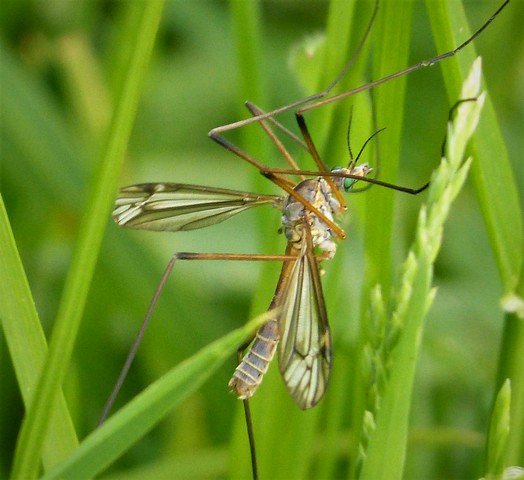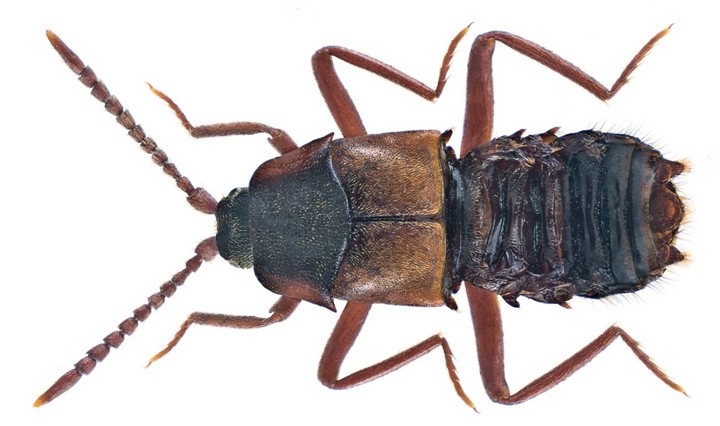Tipula: A giant ‘mosquito’ you shouldn’t be afraid of
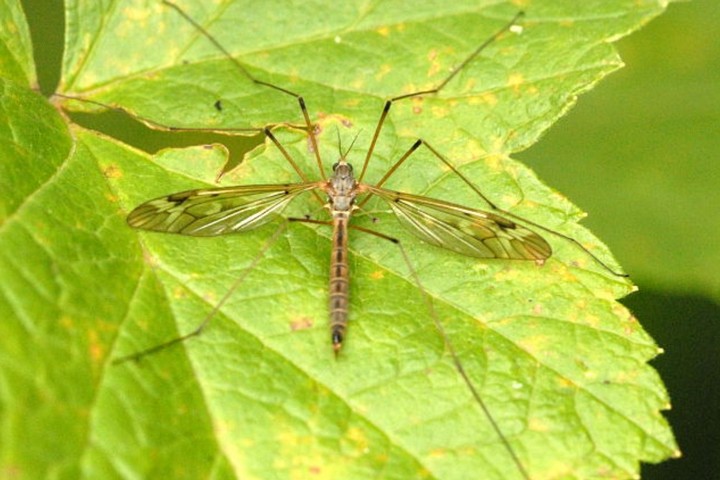
Have you ever seen a fragile, long-legged insect with a body resembling an elongated mosquito in the light of a flashlight and scurried away in terror? It was most likely a tipula, a large but harmless member of the Diptera family, also known as a crane fly. Folklore often attribute bites or danger to it, but science and gardening experience suggest otherwise: the tipula is a beneficial and completely harmless guest.
Appearance and why the tipula is confused with a mosquito
The tipula is an impressive-looking midge: an elongated, slender body, long, thin legs, and a wingspan larger than that of a common mosquito. It’s sometimes called the “bigger-legged midge” or “long-legged midge.” This superficial resemblance—the long body and wings—has led to confusion. But there are important differences:
- The tipula does not have a piercing proboscis – it is physically unable to suck blood;
- The front legs and vertebral mobility of tipulas are more fragile: when trying to grab an insect, most of the legs are easily torn off (this is a defensive technique);
- Typules are generally larger and slower in flight than mosquitoes.
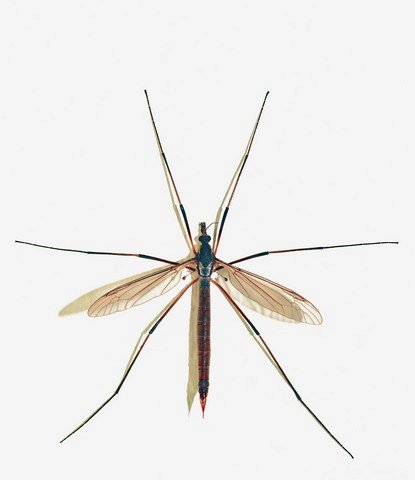
What do tipulas eat and are they dangerous to humans?
Adult tipula mosquitoes often feed on flower nectar or do not feed at all while in free flight—many species have short lifespans, focusing on reproduction. Larvae, however, live in soil or moist organic matter and feed on decaying plant matter, thereby participating in the breakdown of organic matter and the formation of soil. Neither of these feeding methods involves human or animal blood. Consequently, tipula mosquitoes do not bite or transmit the infections common to mosquitoes.
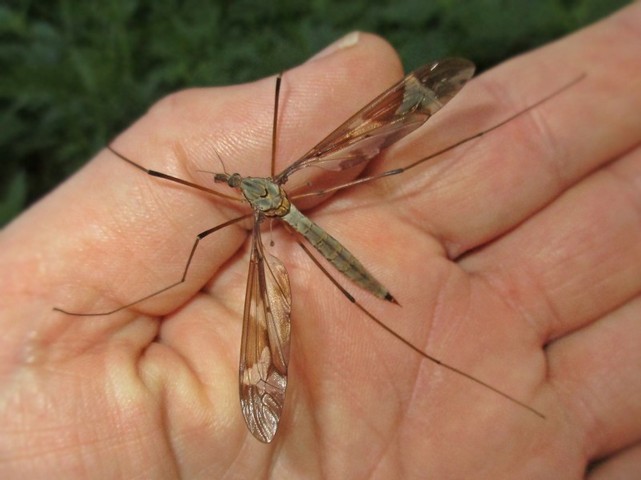
Ecological role: pollination and recycling of matter
Tipulas perform several useful functions in the ecosystem:
- Pollination: when insects fly between flowers, they carry pollen, helping plants to reproduce;
- decomposition of organic matter: larvae accelerate the transformation of fallen leaves and straw into fertile soil;
- food for others: birds, amphibians and predatory insects readily feed on tipulas and their larvae.
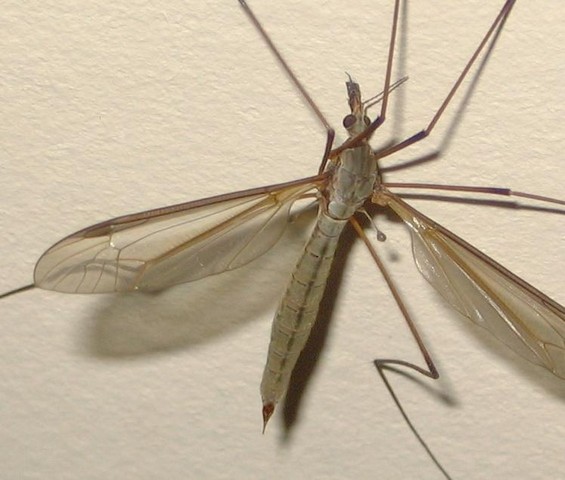
What to do if a typula flies into your house
The main rule is not to panic and not kill the insect out of habit. Here are some simple steps you can take:
- open the windows and doors, turn off the bright interior light and turn on the exterior light – the tipula will fly towards the light on its own;
- If an insect has landed on a wall, wait until it finds a way out on its own, or carefully catch it in a glass jar and release it outside;
- Do not use toxic aerosols unless necessary – they are harmful to both you and the environment.
Myths and misconceptions
Popular myths include that the crane fly “sucks blood” or is “dangerous to plants.” This isn’t actually true: the crane fly doesn’t feed on living plant tissue, and its larvae, on the contrary, help air and moisture penetrate the upper layers of the soil, improving its structure. Another myth is that crane fly mosquitoes are dangerous because of their long legs. Their long legs are simply an adaptation: when threatened, they fall off, saving the insect’s life (and this ability should be viewed as an amazing evolutionary trick, not a cause for fear).
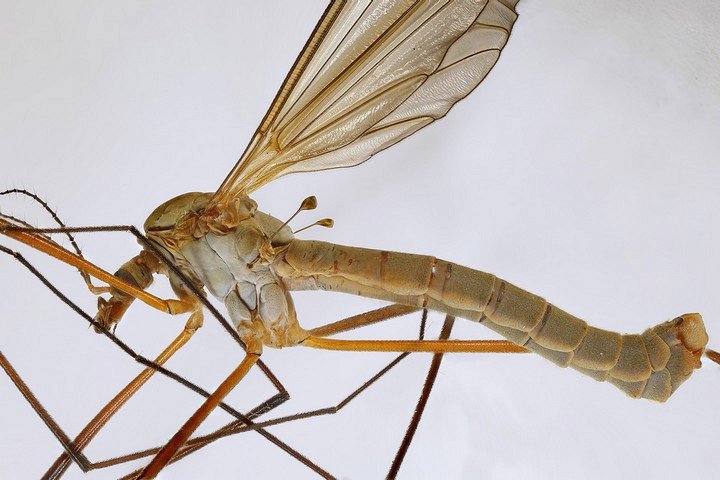
Where are they found and how many species are there?
About a thousand species of tipula have been described worldwide. In temperate latitudes (including most of Russia and Europe), these insects are quite common—they can be found in gardens, meadows, near water, and in forest clearings. Some species prefer moist soils, others dry, open areas; each has its own seasonal peaks of activity.
Why is it worth respecting tipul?
This is an example of how appearances (impressively long legs) can deceive our perception, revealing a creature’s true role in nature to be quite different. This “peacemaking giant” doesn’t destroy, but rather creates: it helps plants flourish, the soil breathe, and birds feed. When you see a tipula in your garden, consider that you’ve encountered not a threat, but a small helper of the ecosystem.
The tipula is a worthy hero of nature jokes: frightening in appearance, useful in essence. Instead of fighting it, it’s better to learn to understand its functions and release it. For our reader, this is another opportunity to look at the familiar world from an unexpected angle: what seems dangerous often turns out to be an important part of the balance of nature.

